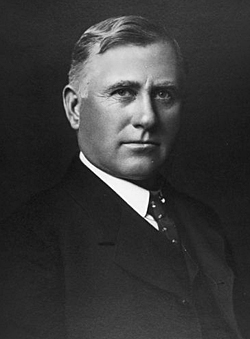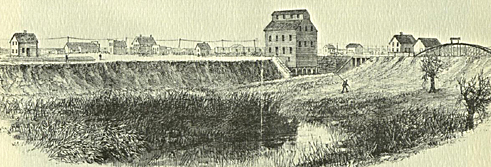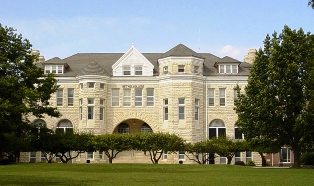Address: 211 E. 1st, Newton, KS 67117
Phone: 316.283.3113
Website: skyways.lib.ks.us/genweb/archives/1918ks/biow/warkenb.html
Bernhard Warkentin, miller and banker, encouraged thousands
of Mennonites from Russia to settle in South Central Kansas
 |
| Bernhard Warkentin. Photo courtesy Bernhard Warkentin House |
Within six months, Bernhard had traveled over 1,500 miles throughout the mid-United States and Canada. He reported in letters to David Goerz that he would recommend his people come to Kansas, if they were to immigrate, as the soil and climate were like theirs in Ukraine, where the Turkey red hard winter wheat would grow.
Having gone back to the Ukraine to visit family in 1885, Bernhard commissioned his nephew, Bernhard Enns, to purchase and ship several thousand bushels of Turkey red wheat seed to Newton, seed that Bernhard later distributed to local farmers at cost. With this move, Turkey red wheat was suddenly available in large quantities for farmers, a significant step in the history of Kansas agriculture.
At a
conference at Carey Hotel in Wichita in
the spring of 1900, Warkentin suggested having large amounts of Turkey red hard
winter wheat seed imported from the Crimea
(15,000 bushels). Kansas
millers agreed. Mark A. Carelton made a trip to the Crimea
and the seed was imported for the 1901 fall planting season. A box car was set
in each county that planted wheat for availability for local farmers. 
Grist mill at Halstead. Photo courtesy Bernhard Warkentin Home
In 1870, Kansas raised less than
2.5 million bushels of spring wheat. In 1880, Kansas raised 17.3 million bushels of wheat.
In 1890, 30.3 million bushels. In 1908, the year of Mr. Warkentin's death, 100 million bushels. 
Newton Mill, 1900. Photo courtesy Bernhard Warkentin House
He died a tragic death when he and his wife went on a trip to Europe and the Middle East with a touring company. Upon leaving Jerusalem April 1, 1908 he was accidentally shot by a young prince, the grandson of the Emir of the Arab tribes in Algeria. Mr. Warkentin died in a hospital in Beirut, Syria the same day.
The funeral
was held at the Warkentin House on May 5, 1908. Bernhard was eulogized as a man who had a more substantial
part in the development of Harvey County and the State of Kansas than any other. He was depicted as a
modest and quiet man, whose integrity was unquestioned.
Warkentin owned mills in Halstead, Newton, and Oklahoma. He also established banks in Halstead and Newton to make it easier for farmers to get loans. He helped found Bethel College in North Newton and Bethel Deaconess Hospital in Newton. He was inducted into the Kansas Business Hall of Fame in 1989.
Click here
for a more detailed chronology of Bernhard Warkentin and his mission to get Turkey
red wheat to Kansas. 
Bethel College Administration Building. Photo courtesy Bernhard Warkentin House.
POINTS OF INTEREST ABOUT BERNHARD WARKENTIN IN KANSAS
NEWTON